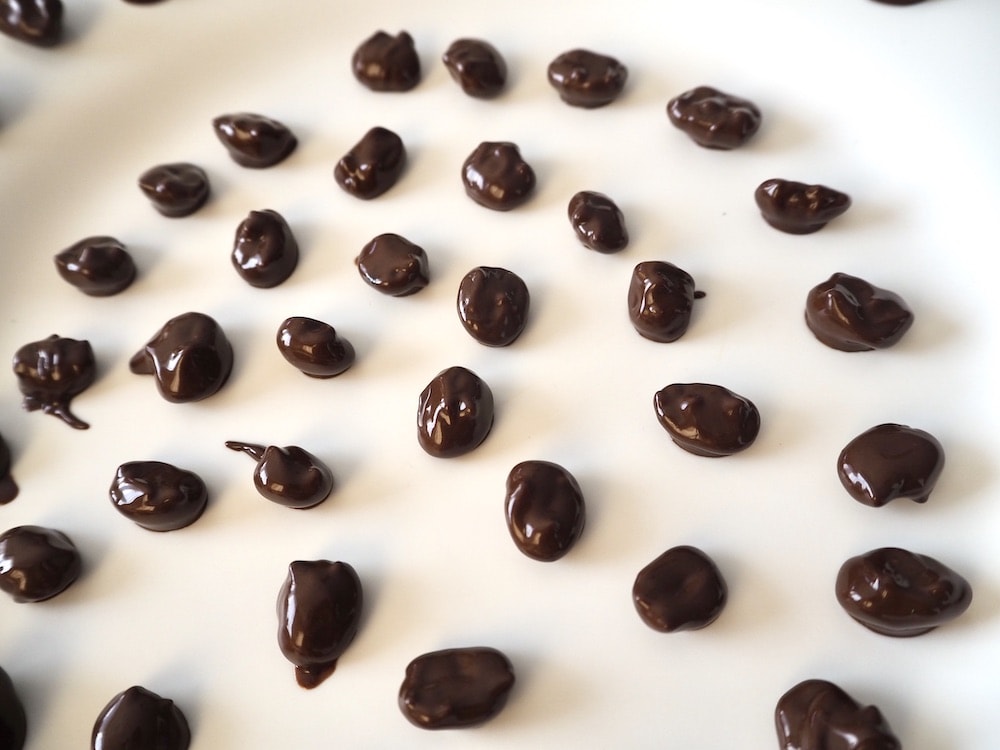

Do Chocolate Covered Espresso Beans Give You Energy?Ĭhocolate-covered coffee beans are basically bite-size pieces of energy. So if you are trying to cut back on your coffee consumption, coffee beans can be a good alternative. That’s actually not a lot if you compare this to a normal cup of coffee. This amount of coffee beans would have around 60-70 mg of caffeine per cup of beans. After coating it with chocolate, the number might decrease to 30-35. If we pick an average size of coffee bean then it would take around 40-50 beans to fill up a typical coffee mug. So how many espresso beans in a shot of espresso? So to plainly say a specific number would be misleading and wrong. This is a tough question to answer as each coffee bean comes in a unique size and shape. How Many Espresso Beans Equal a Cup of Coffee? how much caffeine in one espresso bean It also tastes better as espresso beans are crunchier due to longer roasting. So if you want your chocolate-covered coffee beans to have less caffeine, try using espresso beans to make them. By concentration, it refers to the taste, not the caffeine level. Just because espresso beans taste a bit bitter and thicker than regular coffee beans, doesn’t mean they are stronger.Įspresso is short for concentrated coffee. The more you roast coffee beans, the lesser the caffeine content becomes. Espresso beans are roasted for much longer which gives them their signature dark brown color.Įven though many think espresso beans are stronger than regular beans, it’s not true.

The main difference between regular beans and espresso beans is the way they are roasted. Most of us assume the term “espresso” might be referring to a different type of beans. While they seem like the same thing, they are not. You might have noticed how different recipes mention coffee beans and some others mention espresso beans. This can vary from brand to brand depending on what type of chocolate or coffee beans they are using. A single chocolate covered espresso beans caffeine content is 6-13 milligrams. When you combine dark chocolate and Arabica beans to create these delicious snacks, the caffeine amount increases a bit. It’s a blend between Arabica and Robusta. If you want to try it with Robusta, go for something like FORTE by Filicori Zecchini. It goes really well with chocolates.Īs none of us have any self-control while eating these choco-coffee beans, we should pick the best ingredients that make it healthier for us. We like illy Classico Whole Bean Coffee for its light caramel notes. The low caffeine also means you can have more of them without worrying too much. Most chocolate-covered coffee beans use Arabica beans for their lighter taste. Robusta on the other hand has around double the caffeine with 10mg per bean. So exactly how much caffeine in one espresso bean? A single Arabica bean contains around 6mg of caffeine. They are often found in luxury coffee brands. Arabica beans are what you drink in every coffee shop and cafés. There are a handful of different types of coffee beans but the two most popular ones are Arabica and Robusta beans. It’s important to know chocolate covered espresso beans caffeine content so you don’t eat too much of them. So when you combine them together, they become small capsules of energy. We all know both chocolate and coffee have caffeine in them. Roasted coffee beans dipped in chocolate are a comforting mid-day snack we all crave to have every day. In this article, we will find out how much caffeine in chocolate covered espresso beans and how you can make them at home! How Much Caffeine is in Chocolate Covered Espresso Beans? how much caffeine in chocolate covered espresso beans Of course, they are super tasty and delicious, but are they too much to eat so carelessly?Įver noticed how you can’t fall asleep at night if you eat these choco-espresso beans at night? These jam-packed bite-size energy boosters are a classic choice for many. And when you combine these two, it creates euphoria in your mouth! Probably two of the greatest inventions of humanity are chocolate and coffee.


 0 kommentar(er)
0 kommentar(er)
